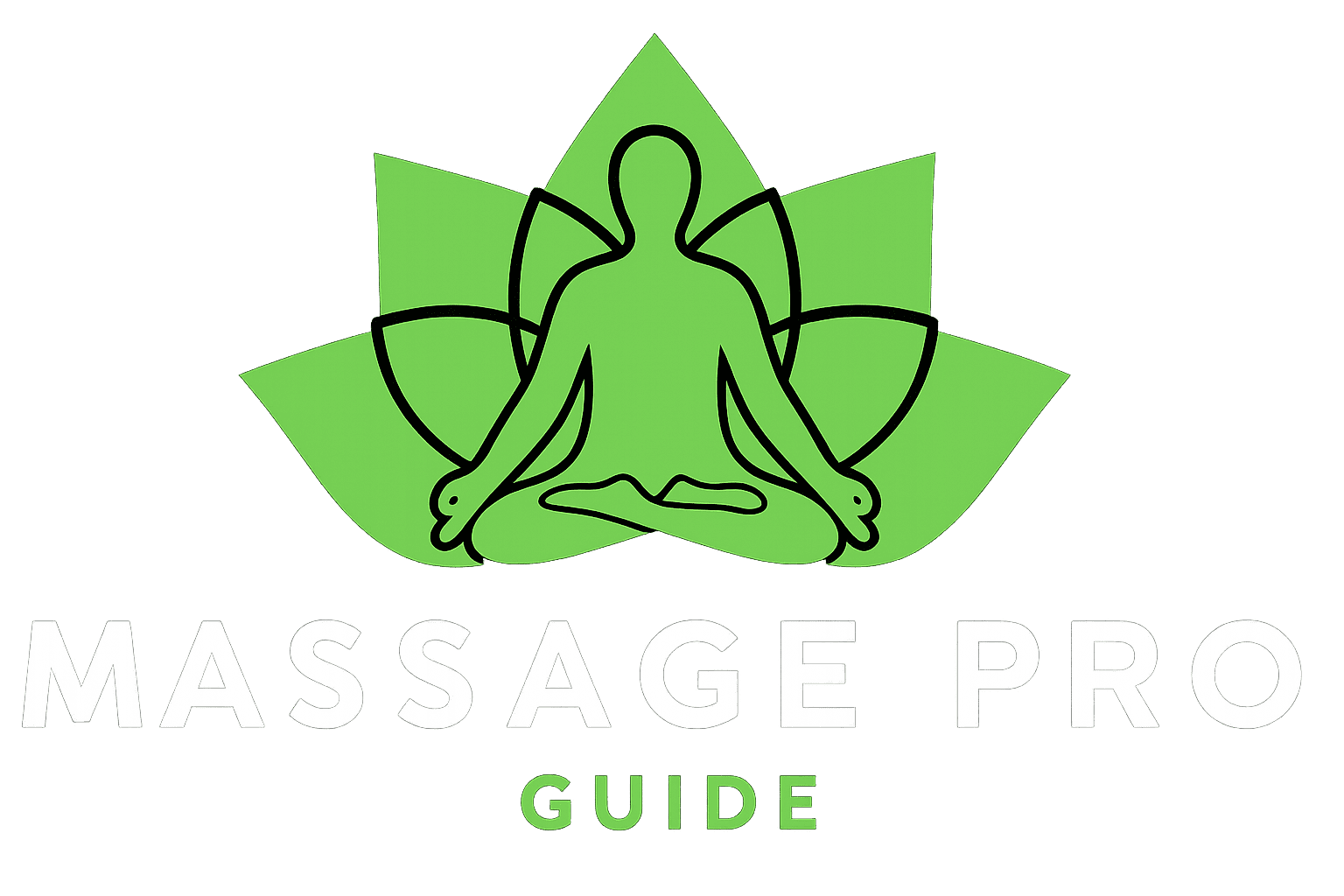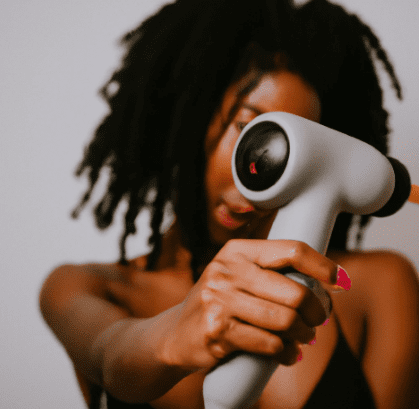Are you trying to discover more effective ways to maintain wellness and fitness? If so, you could use a massage gun vs stretching to relieve painful muscles and increase flexibility. But which method is better? This blog post aims to examine the key differences between massage guns and stretching and assist you in determining which approach is more suitable for your requirements. In addition, we will explore how you can effectively combine these two approaches to attain the best possible outcomes. If you’re an athlete, fitness enthusiast, or someone who wants to enhance their overall well-being, this article is for you. Discover the advantages of massage gun vs. stretching and how they can help you achieve your goal.
What is a Massage Gun?
Table of Contents
A massage gun is a portable device that employs percussive therapy to alleviate muscle soreness and stiffness. It delivers rapid and intense pressure pulses to the muscles, which helps increase blood flow and reduce inflammation. Massage guns are usually equipped with various attachments specifically designed to target distinct muscle groups and body areas.
Massage guns have recently gained tremendous popularity, especially among fitness enthusiasts and athletes. A massage gun can significantly speed up post-workout recovery, ultimately decreasing muscle fatigue and soreness. Massage guns have proven to enhance flexibility and range of motion, mitigating the likelihood of injury and enhancing overall performance.
It is essential to understand that massage guns should not be considered as a replacement for appropriate warm-up and cool-down exercises or stretching. Although massage therapy can effectively reduce muscle tension, combining it with other techniques is recommended to achieve optimal outcomes. In the following section, we will delve into the definition of stretching, and its potential to enhance the effectiveness of massage guns.
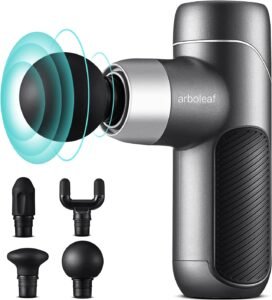
What is Stretching?
Stretching involves intentionally elongating the muscles to enhance flexibility, increase the range of motion, and improve overall mobility. Stretching comes in various forms, such as static stretching, dynamic stretching, and PNF stretching.
The most widely used form of stretching is static stretching, which involves holding a stretch in a stationary position for a specific duration. On the other hand, dynamic stretching involves moving through a range of motion repeatedly without holding a stretch in a fixed position. Proprioceptive neuromuscular facilitation, commonly known as PNF stretching, is a technique that involves a combination of muscle contraction and relaxation while stretching. This approach is aimed at achieving a more deep stretch.
Incorporating stretching into your routine will provide numerous advantages, such as enhancing flexibility and range of motion, minimizing muscle soreness and stiffness, and boosting overall mobility. Including stretching exercises in your warm-up or cool-down routine can reduce the likelihood of sustaining injuries.
Stretching is commonly associated with pre- or post-workout routines, but it can also be incorporated into daily activities to enhance flexibility and reduce stress. Proper execution of stretching exercises is crucial to prevent any potential injuries. In the following section, we will analyze and differentiate the advantages of utilizing massage guns versus stretching. Additionally, we will examine which approach may be more efficient in specific circumstances.
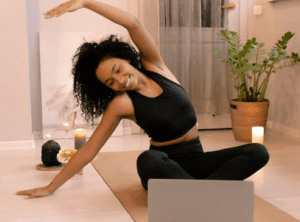
Read more about: Best Massage Gun Attachment for Cellulite:
Differences between Massage Gun vs. Stretching:
Both massage guns and stretching can be effective when alleviating muscle soreness and improving mobility. However, they work differently and may be more effective in different situations. Here are some key differences between massage guns and stretching:
Mechanism of Action:
Massage guns use percussive therapy to deliver rapid and intense pressure pulses to the muscles, while stretching involves elongating the muscles to improve flexibility and range of motion.
Target Areas:
Massage guns can be used to target specific muscle groups and areas of the body while stretching can be used to target multiple muscle groups simultaneously.
Timing:
Massage guns are typically used after a workout to help speed up recovery while stretching can be done before and after a workout and throughout the day.
Effectiveness
Massage guns can be very effective in reducing muscle soreness and stiffness and improving flexibility but may not be as effective in improving overall mobility. Stretching can be very effective in improving overall mobility but may not be as effective in reducing muscle soreness and stiffness.
Accessibility:
Massage guns can be relatively expensive and may not be accessible to everyone while stretching requires no equipment and can be done virtually anywhere.
Although both massage guns vs stretching offer advantages, it is crucial to determine which approach is better suited to your specific requirements. In the next section, we’ll discuss how massage guns and stretching can be used together to achieve optimal results.
Read: Effective Theragun Use for Sciatica Relief
Using Massage Gun and Stretching Together:
While massage guns and stretching can be effective on their own, they can complement each other when used together. Here are some ways that massage guns and stretching can be used together:
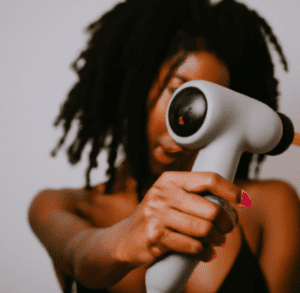
Warm-Up:
Before a workout, using a massage gun to target specific muscle groups can help to increase blood flow and reduce muscle stiffness. Following this up with stretching can help to further warm up the muscles and improve the range of motion.
Post-Workout Recovery:
After a workout, using a massage gun to target sore muscles can help speed up recovery. Following this up with stretching can help to improve flexibility and reduce muscle soreness.
Improved Mobility:
Using a massage gun to target specific muscle groups can help to loosen tight muscles and improve flexibility. Following this up with stretching can help improve mobility and reduce the risk of injury.
Flexibility Training:
Using stretching exercises to improve flexibility can help to make the muscles more receptive to the benefits of a massage gun. This can help improve the massage gun’s effectiveness and reduce muscle soreness and stiffness.
Injuries:
In cases of injury, using a massage gun to target specific areas of the body can help to reduce pain and inflammation. Following this up with stretching can help to improve the range of motion and prevent further injury.
Combining massage guns and stretching can be a highly effective approach to enhancing mobility, minimizing muscle soreness and stiffness, and preventing injuries. To achieve the best results, it is important to determine which method is more effective for your needs and incorporate both into your fitness and wellness routine.
Conclusion:
Simply massage gun vs. stretching both offer distinct advantages in enhancing mobility, improving muscle soreness and stiffness, and preventing injuries. Although they function differently and may be more suitable in different situations, combining them can be a successful approach to obtaining the best possible outcomes.
Whether you choose to use a massage gun, stretching, or both, it’s important to determine which method may be more effective for your individual needs. Integrating these methods into your fitness and wellness regimen can enhance your overall mobility, alleviate muscle soreness and stiffness, and mitigate the risk of injury.
